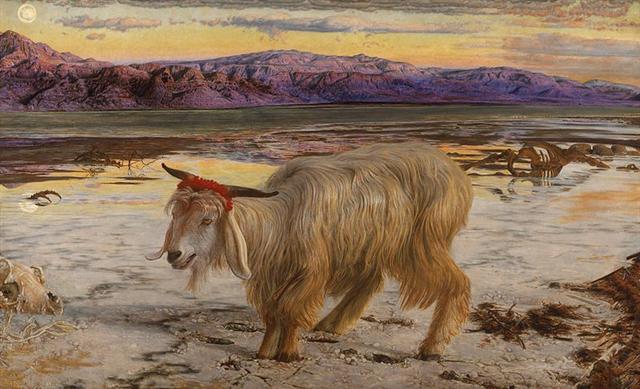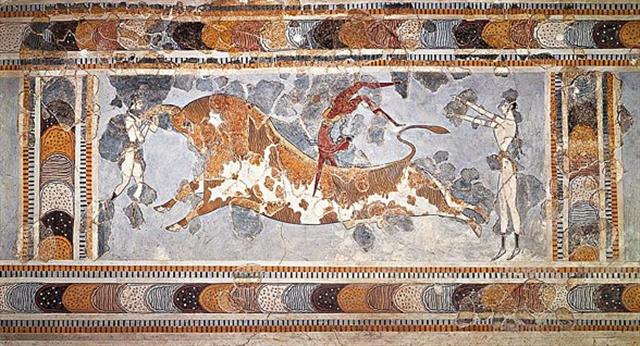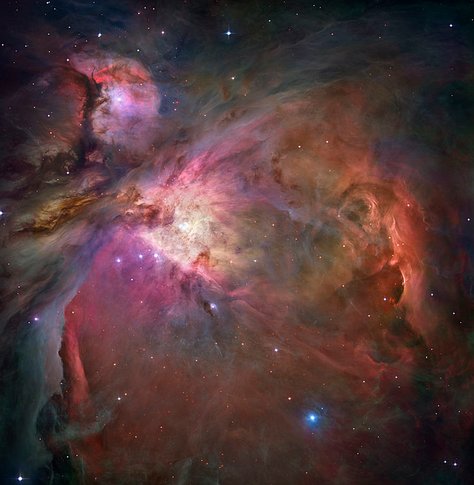In other words, there could late in the G text (after the reign of Saturn, the old Sun) have been a change in view away from following the stars in the night, away from a nakshatra calendar according to the ancient star map. A rule of Mars (Sun at 0h) should follow somewhere after the Turtle in the night - because due to the precession her place with the spring Sun had moved ahead from her old position at 0h to a position in June and her place with the nakshatra Full Moon in autumn had moved ahead correspondingly. ... The seventh tree is the oak, the tree of Zeus, Juppiter, Hercules, The Dagda (the chief of the elder Irish gods), Thor, and all the other Thundergods, Jehovah in so far as he was 'El', and Allah. The royalty of the oak-tree needs no enlarging upon: most people are familiar with the argument of Sir James Frazer's Golden Bough, which concerns the human sacrifice of the oak-king of Nemi on Midsummer Day. The fuel of the midsummer fires is always oak, the fire of Vesta at Rome was fed with oak, and the need-fire is always kindled in an oak-log. When Gwion writes in the Câd Goddeu, 'Stout Guardian of the door, His name in every tongue', he is saying that doors are customarily made of oak as the strongest and toughest wood and that 'Duir', the Beth-Luis-Nion name for 'Oak', means 'door' in many European languages including Old Goidelic dorus, Latin foris, Greek thura, and German tür, all derived from the Sanskrit Dwr, and that Daleth, the Hebrew letter D, means 'Door' - the 'l' being originally an 'r'. Midsummer is the flowering season of the oak, which is the tree of endurance and triumph, and like the ash is said to 'court the lightning flash'. Its roots are believed to extend as deep underground as its branches rise in the air - Virgil mentions this - which makes it emblematic of a god whose law runs both in Heaven and in the Underworld ... The month, which takes its name from Juppiter the oak-god, begins on June 10th and ends of July 7th. Midway comes St. John's Day, June 24th, the day on which the oak-king was sacrificially burned alive. The Celtic year was divided into two halves with the second half beginning in July, apparently after a seven-day wake, or funeral feast, in the oak-king's honour ... The equinoxes were defined by the Sun and they could not be disregarded. The 'Eye' (Ain, ε Tauri) had been set at the beginning of the G text as it should, marking where 65 precessional days ago (around 2772 B.C.) the Sun had risen in MARCH 22. The present March 22, on the other hand, could be defined in the daytime with a gnomon (ua), rather than from observing the position of the Full Moon among the stars. Once the gnomon had been used the heliacal stars would be known and from there the naksthatra stars easily found. I have mapped the heliacal stars in parallel with the glyphs from the beginning of side a. Somewhere in the text the perspective may have been shifted away from heliacal to nakshatra, from daytime to nighttime so to say, and this should mean the text had to return to the heliacal view somewhere later, and I have suggested Rogo in Gb6-26 (408) marked the current 0h. However, there is a small problem. The text could reasonably have been 65 + 366 = 431 glyphs long but instead it seems to cover 314 * 1½ = 471 days. 471 - 431 = 40, and this number could have represented the 'Sea voage' (like in Noah's 40 days and 40 nights). I searched for a picture of Nagelfar - the ship of the dead (or rather their ghosts, their spirits, akuaku) - a ship which had been built from the nails (naglar) of the dead, and I found this illuminating stamp with Naglfar in the center and with the Wheel of the Sun, the Serpent, and the Tree, in the background:
A more profound problem is how the heliacal stars should be mapped. 471 - 366 = 105 and therefore the sequence of right ascension days (and the corresponding nakshatra nights) ought to be broken somewhere in the text. Otherwise the 2nd round in parallel with the glyphs would disagree with the 1st round:
The ancient view with the Earth Turtle at the equinoxes could in the G text have been used to define where the present perspective was due to change over from nakshatra to heliacal. The sun glyph at right below - at 'sun' - is oriented according to the current view, but the sun at left could show to where the precession of the equinoxes had moved the Earth Turtle stars in the night sky:
The left sun wheel has not been turned as much as a quarter around because then it would look precisely as the right wheel. By turning it around half as much (1 / 8) everyone can see the difference. 45º + 16º (waiting for the star to return to visibility) = 61º; not much different from 65 days.
Or the change from old (nakshatra) to new (heliacal) perspective could have been defined from Rigel, or it could have been at the Gate of the Goat (ε and ζ Aurigae, Haedus I and II) - which ancient dates I have tried to put in parallel with the dates given in Manuscript E.
Or it could have been the 'Star in the Bull towards the north' (El Nath, β Tauri) which was significant, causing the explorers to return. Or maybe the break-neck leap of death (salto-mortal) should go over also the 'Star in the Bull towards the south' (ζ Tauri), after which the acrobat would come down on his feet again, landing safely on mother earth:
Or the fence could have been at Praja-pāti (Lord of Created Beings) - defined by the vertical line stretching all the way down to γ Columbae:
When I early tried to find out where in the G text such a change could be, I thought a good guess would be at Gb5-29. My idea was that there ought to be a seqence of glyphs which both could be read according to the 1st round and according to the 2nd round. After much effort - which I will not try to here recapitulate - I decided Gb5-29 should be in the center of such an overlapping double reading (like splicing the cords of heaven). I counted also with the empty glyph space at the beginning of side a and found it reasonable to regard Gb5-29 as the 'tail end' of the first cycle and Gb6-1 as the first glyph in the next cycle: ... Tagata in Gb5-27 can be explained by counting 52 * 7 = 364. And then we can understand why the figure in Gb5-29 is disappearing - it will represent day number 366 if tagata is day number 364 ... In the center of the 5 days beginning at Gb5-29 was the 'necklace' and Makoi may have pointed out the similarity between the 3 Belt stars of Orion and the 3 islets (youths) belonging to Te Taanga. ... Alnilam, Anilam, Ainilam, and Alnihan are from Al Nithām, or Al Nathm, the String of Pearls, or, as Recorde said, the Bullions set in the middle of Orion's Belt. It portended fleeting public honors to those born under its influence ... It is the central one of the Belt, culminating on the 25th of January ... Bullion ... precious metal in the mass ... Rom. *bulliōnem boiling, f. L. bullīre boil ... ... When Ira's canoe reached the islets (off the southwestern coast), Makoi (who was left behind) shouted the following (after him): 'Eight lands (are there), one has been found (or, an eighth land has been found for the first time, evaru kainga katahi i ravaa), that is, Te Pito O Te Kainga. During the fast journey, one cannot find the seven lands in the midst of dim twilight. Once (Easter Island) has been lost, not even eight groups of people (i.e., countless boat crews) can find (it) again. - Ruhi to the right, Pu to the left, necklace around the neck of the figure of Hinariru at Papa o Rae!' Above I have therefore at Alnilam inserted also the name Kakkab Sar (the Constellation of the King). And I am suggesting this should be the place of the headless king Oto Uta - at the vertical line from the Heka triplet down to Alnilam. And the Orion Nebula (M42) was (at 4.00) quite within the range of visibility:
... The Heka triplet is where we otherwise would have expected to see a bright single star representing Orion's head (when looking from a location in the northern hemisphere). ... Al Maisān, the title of γ Geminorum, by some error of Firuzabadi was applied to this star [λ Orionis] as Meissa, and is now common for it. Al Sufi called it Al Tahāyī; but Al Ferghani and Al Tizini knew it as Rās al Jauzah, the Head of the Jauzah, which it marks. The original Arabic name, Al Hak'ah, a White Spot, was from the added faint light of the smaller φ¹and φ² in the background, and has descended to us as Heka and Hika. These three stars were another of the Athāfiyy [tripods used for cooking] of the Arabs; and everywhere in early astrology were thought, like all similar groups, to be of unfortunate influence in human affairs. They constituted the Euphratean lunar station Mas-tab-ba-tur-tur, the Little Twins, a title also found for γ and η Geminorum; and individually were important stars among the Babylonians, rising to them with the sun at the summer solstice, and, with α and γ, were known as Kakkab Sar, the Constellation of the King ... ... λ and the two stars phi furnish an easy refutation of the popular error as to the apparent magnitude of the moon's disc, Colas writing of this in the Celestial Handbook of 1892: In looking at this triangle nobody would think that the moon could be inserted in it; but as the distance from λ to φ¹ is 27', and the distance from φ¹ to φ² is 33', it is a positive fact; the moon's mean apparent diameter being 31' 7''. This illusion, prevalent in all ages, has attracted the attention of many great men; Ptolemy, Roger Bacon, Kepler, and others having treated of it. The lunar disc, seen by the naked eye of an uninstructed observer, appears, as it is frequently expressed 'about the size of a dinner-plate', but should be seen as only equal to a peppercorn ... "In other lunar zodiacs [than that of the Babylonians] they were the Sogdian Marezānā, and the Khorasmian Ikhma, the Twins; the Persian Aveçr, the Coronet; and the Coptic Klusos, Watery. They also were the 3rd manil Al Hak'ah; the sieu Tsee, or Tsuy He, the Beak, or Pouting Lips, anciently Tsok, which Reeves gave as Keo; and the nakshatra Mrigaçiras or Mrigaçirshā, the Head of the Stag, - Soma, the Moon, being its presiding divinity, and λ the junction star towards Ārdrā [ruled by 'the moist one', Betelgeuze], and its determinant." (Allen)
"... they were possibly influenced by recollection of the fact that the vernal equinox lay here in 4500 B.C. In addition to the customary Hindu title, Weber mentioned Andhakā, Blind, apparently from its dimness, Āryikā, Honorable, or Worthy; and Invakā, of doubtful meaning, sometimes read Invalā.
In China these stars were Sï ma ts'ien, the Head of the Tiger." (Allen)
We can easily see Orion with its T-form of stars above the nose of the White Tiger and straight below the Heka 'cooking tripod'. The colour white for the Tiger could have alluded to the White Spot (Al Hak'ah). Gemini can then be found from Orion by moving up and to the left in the picture. Right ascension increases clockwise and with Orion at the nose of the White Tiger we can estimate the head of the Grey Turtle caught by the Green Serpent (a sign of water) to be around 3 / 4 * 24h = 18h. I.e., around right ascension day 18h / 24h * 365.25 = 274. March 21 (80) + 274 = 354 (December 20) = Ko Ruti 5, perhaps at the turtle (honu) glyph in Gb6-10 (392). ... The canoe of Pure O left on the fifth day of the month of November ('Ruti'). After the canoe of Pure O had sailed and had anchored out in the bay, in Hanga Moria One, Pure saw the figure, which had been lying there all this time, and said to his younger brothers (ngaio taina), 'Let's go my friends (hoa), let us break the neck of this mean one (or, ugly one, rakerake). Why should we return to that fragment of earth (te pito o te kainga, i.e., Easter Island)? Let us stay in our (home)land!' When the 3 spirits sailed out on the Sea in their canoe it had gone 80 days from October 1 (274). |
||||||||||||||||||||||||||||||||||||||||||||||||||||||||||||||||||||||||||||||||||||||||||||||||||||||||||||||||||||||||||||||||||||||||||||||||||||||||||||||||||||||||||||||||||||||||||||||||||||||||||||||||||||||||||||||||||||||||||||||||||||||||||||||||||||||||||||||||||||||||||||||||||||||||||||||||||||||||||||||||||||||||||||||||||||||||||||||||||

















